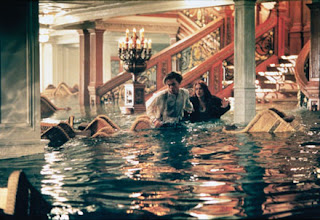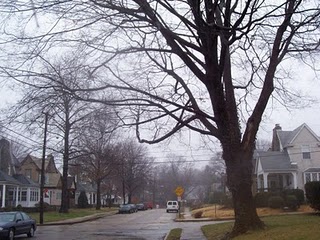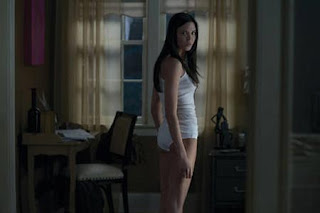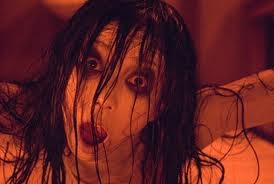Learning objective:
- To learn the film language used to describe lighting techniques and effects
- Analyse lighting techniques and their effects, using the correct terminology
Outcome:
All: will be able to describe one style of lighting techniques. (E)
Most: will be able to identify 2-3 lighting styles and explain the purpose it has. (C)
Some: will be able to identify the lighting style and will also be able to use media language effectively to describe the purpose it has. (A)
Lighting helps to convey mood and atmosphere in a scene. It can also be used to guide the audience’s attention to a particular object, person, or gesture. Lighting can also be used to cast shadows and build tension and suspense.
Lighting Terminology

This is back lighting and is light that comes from behind the character; if little light is used then this creates silhouettes and a scary emotion to the audience because you can’t see who the people are that are; it could be anything. This would help me in my thriller film because if i wanted to potray an unknown villian then i would use back lighting. This would allow the audience to see the outline of a figure but not the face. If i use this in my thriller film then this would make the audience wonder who the person is. It will also make the person seem more like a dark and evil person as we can't see their face.

This is back lighting and is light that comes from behind the character; if little light is used then this creates silhouettes and a scary emotion to the audience because you can’t see who the people are that are; it could be anything. This would help me in my thriller film because if i wanted to potray an unknown villian then i would use back lighting. This would allow the audience to see the outline of a figure but not the face. If i use this in my thriller film then this would make the audience wonder who the person is. It will also make the person seem more like a dark and evil person as we can't see their face.
This is high key lighting. This means lighting appears more natural and realistic to the eyes; filter lights are used to make the shadows produced looked softer. This creates a calm happy emotion. This is because the character is smiling and her mood looks calm so it makes the audience calm. THis will help me in my thriller film because if i wanted to create a calm and happy mood then i would use this type of lighting. I wouldn't use this type of lighting often in my thriller film becuase it wouldn't allow me to create some of the mood i want to achieve. For example if i wanted to create a character to look bad and evil, it would be harder because you would see the characters face. Although if it was darker, you wouldn't see the characters face well so there will be a sense of tension as the audience can't see the characters face.
This is top lighting. This is when the light is coming from the top or above the character. This creates a happy emotion to the audience. This is because the character in the picture is smiling. This type of lighting creates a glamourous look in the star; it also highlights the key features of a character. This also creates a natural look to the image because the lighting is coming from a high angle and the sun is high also. This will help me in my thriller film because if i wanted to make one of my characters look natural then i would use this type of lighting. Although as high key lighting i wouldn't use this type of lightig as much i my thriller film because it would be hard to create certain moods to the audience.
This is under lighting. This is when the main source of light comes from below the subject. This creates a sinister feeling because of the distorting effect it has on the characters face; so this thi often used in horror films. This picture gives the character a sinster look. This may be because the background is dark and part of the characters face is dark. This type of lighting will help me in the making of my thriller film because it gives characters bad intentions based on what they look like. So if i wanted to build tension to the audience from a character's actions then i would use this type of lighting.

Here is an example of low key lighting. This creates a suspicious mood and is used to create suspicion. This type of lighting creates suspition because the audience can't see the characters face properly so creates suspicion and makes us think that the character has something to hide. Low key lighting will help me in the making of my thriller film because it makes it easier to create tension and suspense. This is because the audience can't see everything that going on. So for example if they see someone walking down a hallway in lowkey lighting there will be tension as they can't see the characters face properly.
In a studio the lighting normally comes from 3 main sources;
Key Light: Is usually the brightest light and the most influential. Here is an example of key lighting:
Back Light: Helps to counteract the effect of the key, making the character/ object look more rounded. Here is an example of back lighting:
Filler Light: Helps to soften the harsh shadows that the other lights create. Here is an example of filler light:
Film Noir is the term given by French film critics to a group of American films released in the late 1940’s and 50s. The plot was often based on detective novels set in big cities with dark alleyways, wet pavements and sleazy bars. The films were termed ‘noir’ because of the dark look of the films. The lighting was low key with strong areas of contrast between light and dark. Actors’ faces were sometimes lit this way to cast a dark shadow over one side, suggesting a darker side to the character.
Extract: The Matrix
Here is the URL to the red pill/blue pill of The matrix: http://www.youtube.com/watch?v=arcJksDgCOU
The lighting of this extract is low key. This created a more sinister feel to the scene. This may have been because there was a lot of dark pacthes around the room which created an evil and dark vibe to the room. The characters faces were half hidden. This created a sense of mystery to the audience because we couldn't see their faces;we didn't know their full emotion. Overall the lighting made the scene have a scary mood because you can't see much, it makes you wonder. There are some elemnts of film noir because of the dark look of the scene and the lighting was low key. Also the actors faces were hidden by the darkness to show their darker side.





























